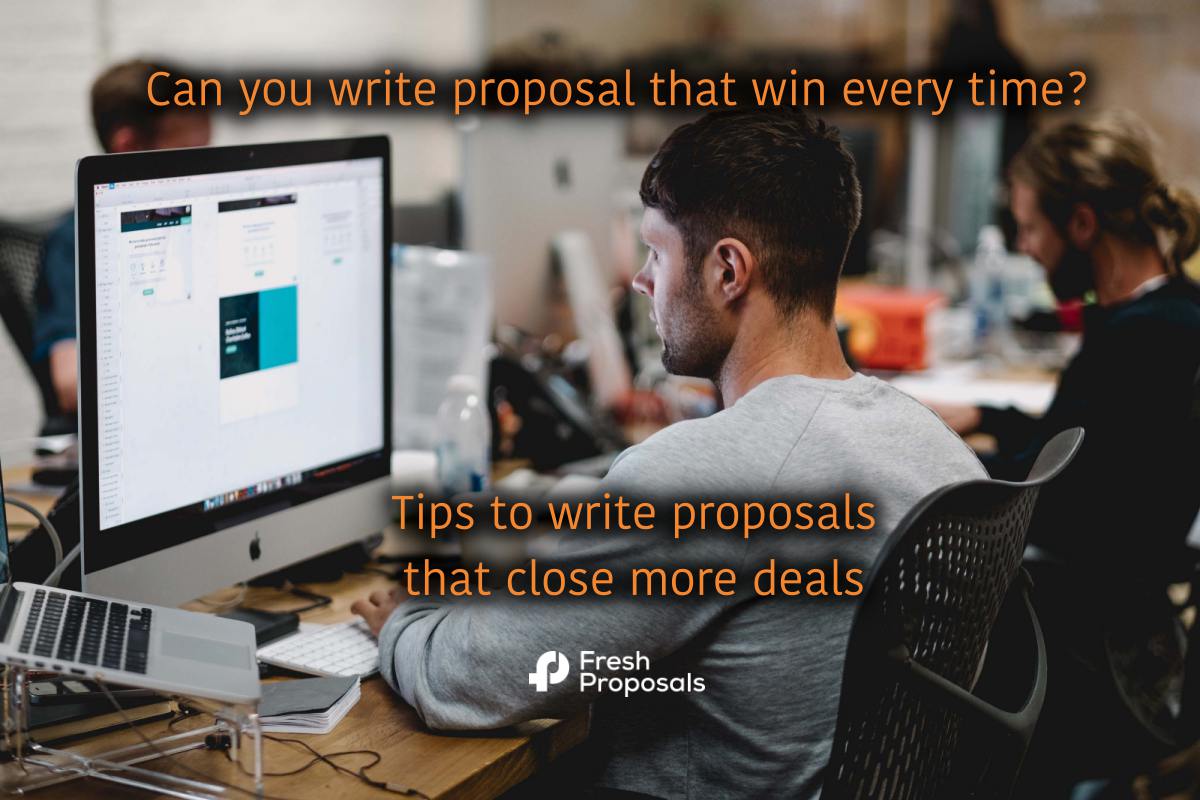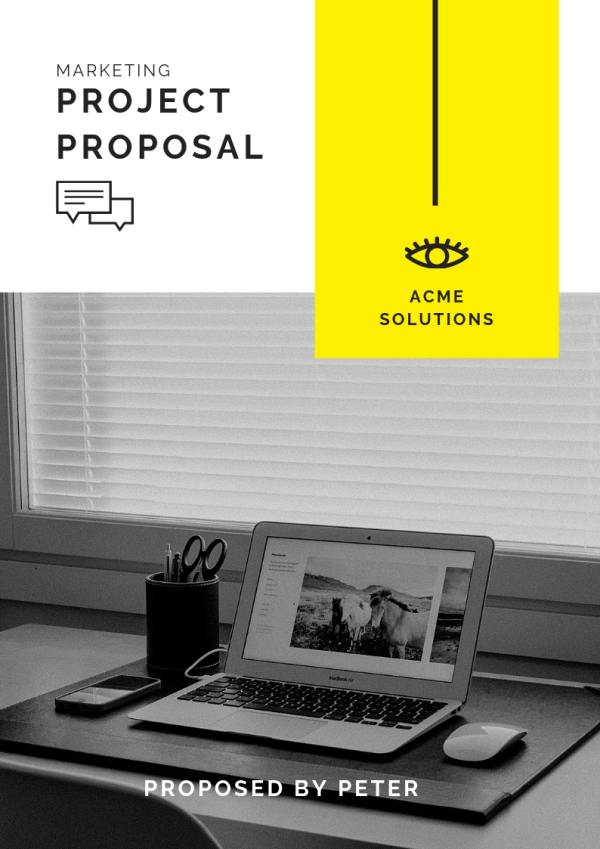Writing a new proposal? That too, when you want to break-through a hot lead at earliest? For many, writing a proposal feels like moving a mountain. You are overwhelmed with questions like what all things should be included? Should it be descriptive or brief? Will it CLICK for the client, will he find it credible to invite us to the next step? How should I even begin writing the proposal?
Despite of all these thoughts, you know, you have to EAT THAT FROG[1]. So let’s try and make it easier to write the proposal by breaking it down to sections. While we break it down let’s go back to basics and ask yourself why are you writing this proposal, what is the primary goal?
Tips to Write a Winning Sales Proposal
Even though writing and managing sales proposals can be challenging for salespeople but believe it or not, any successful deals require an effective sales proposal.
Sales Deal Does Not Happen Just Like That.
The only reason one writes a proposal is to persuade the customer or sponsor. Your proposal should help the customer to make the decision in your favor, it should influence the customer and convince him/her to invite you for the further process.
There are two very important things you must know and apply to your proposal.
- Customer cares only about its own needs
- The customer has very limited time to go through all proposals, s/he may relook a given proposal further only if it makes the first impression right.
If you understand these two essential principles and apply them while writing your proposal, your proposal will help you win the contract/partnership/collaboration. We are happy to share tips for proposal writing,
Let’s get rolling and look at a general structure your proposal should have.
- Proposal Cover
- Executive Summary
- Introduction
- The Problem Customer Trying to Solve
- Your Solutions to Address Customer’s Need
- Your Experience & Expertise
- Next Step
- Your Approach
- Implementation Plan/Milestones
- Pricing/Cost
- About Company/Team
- Case Studies/References
Now let’s take a deep breath, deep dive, into each of these points, one by one:
Proposal cover
They say, “First impression is the last impression”. It is true even in case of a proposal. The cover page of your proposal is the first thing your prospect/sales lead is going to see hence you better make it impressive. Though proposal cover page need not grab eye-balls with any glittery stuff; simpler the better but it should be visually well designed.
The cover page of your proposal should include headline information such as:
- Project name
- Client name and point of contact
- Your company name and contact info
- Date of submission of a proposal
If you are going to use any image or logo of your company, make sure that it is of the right resolution, size and it bodes well with the background. You do not want to make a lousy impression with low resolution or semi-transparent/poorly looking images/colors on the cover page.
See Related Article: Sales Proposal Cover Letter vs Executive Summary
Executive summary
Interestingly, the executive summary is assumed to be a summary of a proposal. It is not entirely correct. An executive summary of a proposal should outline why the solution you are proposing is the most suitable and your company is well prepared to deliver it. If the cover page has generated the client’s interest, the executive summary should hook him up and make him read further — why your company/solution beats the competition.
The executive summary has to be highly convincing with a focus on what benefits clients can using your product or service. If you can’t get your executive summary right, chances are high that the rest of the content in your proposal will be skipped.
Remember the executive summary should have
- Benefits Not Features
- Brevity Not Description
- Specifics Not Repetition
Once you have your prospective client hooked up to your proposal by reading the executive summary, you definitely get the opportunity to explain features, be description, repeat your proposition in subsequent sections of the proposal.
The executive summary should cover the following points:
Introduction
Generally one shouldn’t start talking about its own company, you would introduce the reader in this section. Though the introduction is not mandatory, it helps the client get a sense that you are GETTING IT. It should be engaging and keeps up the client interest to read further. One should keep the focus on the client’s background, its pain areas/requirements and expected outcome.
The Problem Customer Trying to Solve
Before you can solve the problem, you need to GET it and get it RIGHT. As simple as that. And you just have the opportunity in this section to show your prospective client that you understand it very well. Otherwise, if you do not understand the customer’s pain areas, no one would care about your company background, how many success stories you have in the past.
Let me repeat this: in this section, you should not write about your company, its track record but the focus should be entirely on the client, the problem it is facing or the challenge trying to solve.
The Solution to Address Customer’s Need
In this section, you will write about a high-level solution that your organization has to offer. Highlight how this solution will address the business challenges your prospective customer is facing, how your solution will work for the client, what benefits clients can expect and so on.
I know, it is tempting to write detailed information about the solution but keep in mind that this is still a subsection of executive summary. Hence try to keep it brief and precise. It should give your prospective client confidence that your solution is going to work for him/her, and get him thinking about the benefits, results because of the solution your team has offered.
Your Track Record of Success
Once your client knows you have a reasonable solution, the question the would linger in its mind — why you as a solution provider, why your company, the team, or the service/product is the most suitable option he should go for. This section should quickly answer “What makes your company as his/her CHOICE?”
Typically you write about how your solution has been successful in similar situations, for the same/similar industry or even for the client’s competitor. You can write about unique processes, technology your company uses, the skill set of your team possesses. Reading this section should give the client the confidence that your company, your team will be able to deliver desired/promised results.
Next Step/ Action
If your proposal has been able successfully to keep your prospect reading it so far, it means you have a chance to make a long-lasting impression. Reiterate in a convincing tone that your company, your team is the only choice client has and you are very keen, interested and excited to work with the client for years to come.
Approach
In this section, you have the opportunity to demonstrate your approach to solving customer’s business challenges. The points you would like to cover in this section can be
- Tools, technology, architecture to be used
- Processes to be followed
- Skillful team to be deployed
- Delivery plan
Remember that you do not want the information in the approach section to be generic or copy-pasted like a template with the client name replaced. It is quite possible that your already delivered/existing approach may work exactly same to prospective client but you still want to ensure that the language resonate with the prospective customer as if you approach is only for this client.
Implementation Plan
This is the section where your experience, gut feeling, previous guesstimate will help you propose a reasonable implementation plan. Once customers appreciate your solution, your approach, and your capability, s/he would like to know in how much time, its business challenge will be solved. That means how and when you will be able to implement your solution. Thus your implementation plan should include information about
- List of deliverable
- Important Milestones
- Items in scope and not in scope
- Overall implementation timeline
Deliverable
Now it is time to set clear expectations. In this section, you can list down specific delivery items that will be implemented and delivered to the client as a solution. It informs the client what is included in the proposal and what is expected to be delivered. The high-level deliverable can be
- Website SEO Audit
- Application UI/UX Design
- Marketing Consulting
- Strategy Consulting
You will have to break the high-level deliverable into individual deliverables such as competitive analysis report(s), PSD file(s), design file(s), marketing plan report, etc. It is better to provide detailed information on individual deliverables. Since it is possible that the client may not be aware of the jargon, lingo we use regularly; better not to assume everything about the client and deliverable. You should provide as much clarity in plain simple words, what is in scope, what is not in scope, etc. This will avoid any miscommunication, confusion, and clashes in the future.
Milestones
Let’s identify when important delivery will be made in the project or as per the solution implementation plan. These high-level events in the plan i.e. milestone give the client a better picture of how/when things will be implemented, who will be implementing, what will be achieved, etc.
Fees/Cost
This is a crucial section, because it is about money. Everything else falls in place/as expected, prospective clients will certainly want to know, how much it will cost him/her to accept your offer. Your proposal will have cost elements. But it is the final total cost that the client will look for.
Proposal with just a couple of fees specified in the fees section is likely to be closed. We believe the reason is simplicity to understand the headline pricing.
Of course, That doesn’t mean you should not describe individual cost elements. If it is way complicated, you can have these cost elements included in the annex but just present as a single liner item in the main fees table/section.
About Us, Team
This section depicts the reliability quotient of your company, your team and the propose in itself. You must include the following points in this section. Prospective clients would like to who are the people behind your company, who will be working with him/her, are you a known vendor in the market, whether for all good reasons, etc.
- History
- Founding Team with its photos
- Working Team with its photos
- Products, Services Offered
- Industry Awards, Recognitions
- Vision and Values
Do not forget to add vision and values because these two aspects have a long-lasting impact beyond the proposal. Clients would pay extra for the reliability factor once they realize you have principles, values, vision; and you stick to those values in all weathers.
You can include other sections such as Case Studies, Customer References, Terms, and Conditions.
Pro tip
You can always refer to any sales proposal checklist to help you remain focused.
—————————————————————————————————————————————————————————
Subscribe to Proposal Software blog and know about how to write winning sales proposals, learn about proposal software features, proposal templates, online proposal software benefits, business proposal template.
Reference:
[1]. Eat That Frog






0 Comments